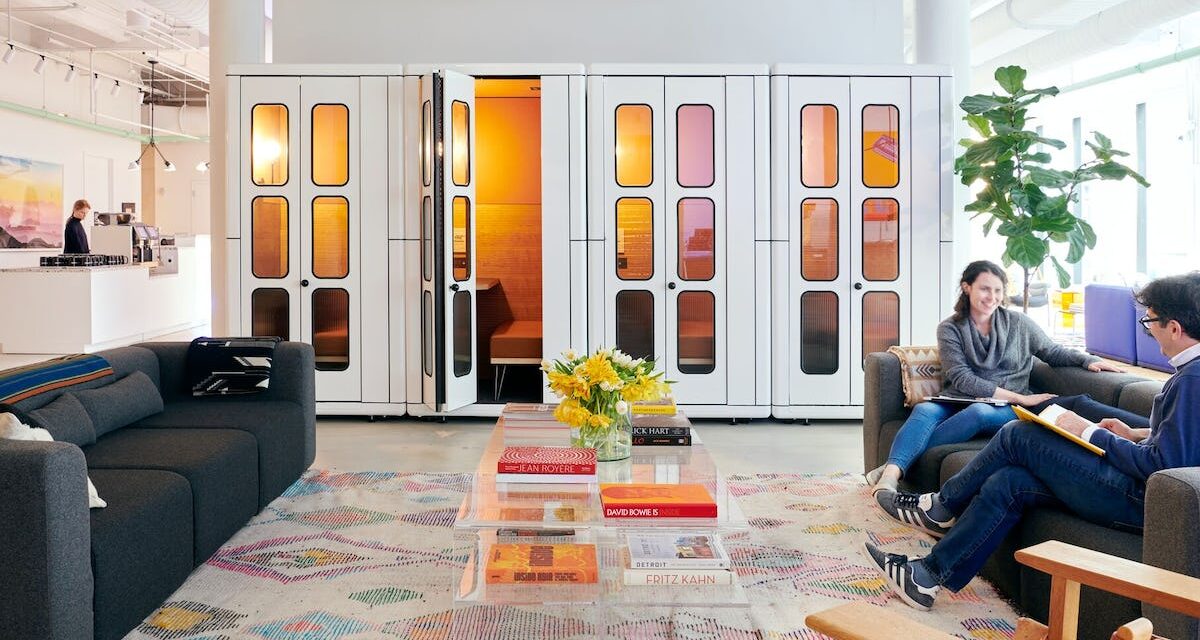Modern work has never been more diverse. As you may know, remote work has exploded in popularity due to the outbreak of Covid-19. But so have coworking spaces, with their networking opportunities and the added bonus of more human contact. These two approaches are at opposite ends of the spectrum, and most workers will do best with a style of work that’s a mixture of both.
That’s why hybrid working presents such a great sweet spot. But before a hybrid work model can be implemented, there has to be well-thought-out strategy and planning. You must be able to maximize the benefits of using both environments without being overwhelmed by the switch.
In this article, we discuss our top strategies for navigating the transition between remote working and using a coworking space. With our tips, you can make sure the transition is seamless and doesn’t hinder your productivity.
1. Embrace Routine Flexibility
Remote work shines because of the freedom of choice it provides. That said, there has to be structure, and routine is a big part of that by helping to set clear lines between personal and professional. Adding in coworking however can make this even more of a challenge.
To counteract this, consider having set working hours. These would be non-negotiable hours when work is most productive regardless of location. Time outside of these hours you can flexibly shift between concentrated work sessions or collaborating at the coworking space. This way, you have a model that keeps productivity consistent without sacrificing too much flexibility.
2. Tap into Coworking Amenities
Coworking spaces are more than just shared offices. They can be serious innovation hubs that come with tons of amenities that meet all your professional needs. Beyond the basic facilities, many offer features like conference rooms, soundproof booths for calls, brainstorming areas, and even relaxation zones.
It’s best to plan your work days around these amenities at these spaces. If you’re lucky enough to be at a coworking location with a high-tech conference room, be sure to schedule meetings or client presentations on days you’re there. You’re a member of the space – why not take full advantage of the privileges?

3. The Portable Office Toolkit
Transitioning between remote and coworking can be a pain if you’re unprepared. How do you prepare? Create a portable office toolkit. It’s more than just your laptop – the goal is to make a mobile version of your workstation.
Consider investing in a durable and organized laptop bag, portable external hard drives or flash drives, noise-cancelling headphones for focused work, and a notebook or planner for notes or sketches.
Having your toolkit is how you save time and reduce the amount of disruption that is inevitable with switching environments.
4. Communication is King
Effective communication is non-negotiable if you’re working in a hybrid environment. In an organization, you’re going to have different professionals with different capacities at multiple locations. Everyone needs to be in sync.
The first step is to make sure your team or clients are aware of how you’re set up. For example, if you’re using coworking, let them know that meetings or collaboration will be the best way to work together. When working remotely, you might be focusing more on tasks that require deep concentration.
You’ll also want to take advantage of digital tools. Make use of platforms that give you status updates (that indicate when you’re working remotely, coworking or just unavailable). Also, always have a backup plan. Coworking spaces can have internet issues or become very noisy so having that alternative like relocating to a quiet corner or having a mobile hotspot handy can be a lifesaver.
5. Mind the Transition
Your transition won’t just be physical in nature. There’s a mental aspect as well. Diving deeply into work when remote requires a completely different mindset than when you’re networking or collaborating in a coworking space. You would be well advised to create small rituals to help bridge that gap.
One idea would be that before you leave your remote workspace, make a list of tasks you need to complete at the coworking space the next day. When the day is over at a busy coworking hub, make a routine for winding down so you can switch gears. A great idea here would be to go for a short walk or have a cup of tea and relax.
6. Personalize Your Workspaces
Coworking spaces are designed to be a one-size-fits-all ordeal. But that doesn’t mean you can’t make it yours when you’re there. A personal mouse pad, a plant from home, or even photos can give you a sense of continuity between your remote and coworking environments.
Familiarity breeds comfort, and comfort can seriously boost your productivity, which is why you want to create that mental bridge between your workspaces.

7. Capitalize on Networking Opportunities
Half the reason you’re using a coworking space is for the networking potential. It’s a huge advantage to be surrounded by professionals from other fields who you can learn from and collaborate with.
Plan your coworking days around the events and meet-ups that these spaces frequently host. Many coworking spaces have skill-sharing workshops or mixers that can be amazing for networking or personal growth. And it doesn’t just have to be at special events. During regular days, take coffee breaks. Introduce yourself to someone new and get to know them. You never know where it could lead.
8. Prioritize Well-Being
It can be taxing, both physically and mentally, when you’re transitioning between two work environments that are quite different. Don’t forget about your well-being, as you’ll want to prioritize your mental health during the initial transition.
Make sure you set aside time for breaks, regardless of where you are with your work. It gets a bit more difficult at a coworking space, but nothing is stopping you from going for a walk or chatting up a coworker. At home, get out of your chair and stretch. Find a place with environmental beauty like your garden. Disconnect your mind for short intervals. It’s how it recharges.
9. Stay Updated with Tech and Tools
The hybrid work model demands you have a collection of tech tools. From project management platforms like Trello or Asana to tools for converting Word to PDF, you’ll need software especially to stay current in either environment. It’s how you both keep connected and maintain a consistent workflow no matter where you are.
Always update your software to the latest version. Stay in the loop about new tools that can simplify your work or increase your productivity. Without good technology, a transition between remote work and coworking can get pretty hairy.
10. Feedback and Refinement
Lastly, the hybrid workspace model is not static. Just like you’ll be updating your software, make sure you update your skills and mindset. There’s no shame in occasionally asking for feedback from your peers or superiors. You must be able to understand what is still working, and what has outlived its usefulness.
Maybe you realize that you’re more productive at coworking spaces during the mornings, or that remote afternoons are better for brainstorming. Incorporate that knowledge into your schedule. Keep refining your strategy and keep growing.
Conclusion
In essence, navigating a hybrid style of work is an exercise in balance. You’re trying to balance the introspective way of remote work with the extroverted buzz of the coworking space.
The transition will be challenging at first. If you use the advice of this article, you can create a strategy that lets you navigate and master this new paradigm.
If you can, you’ll reap the amazing benefits of having both incredible flexibility and the face-to-face connection and motivation of a traditional office space. And you might just meet your next network connection as well.









